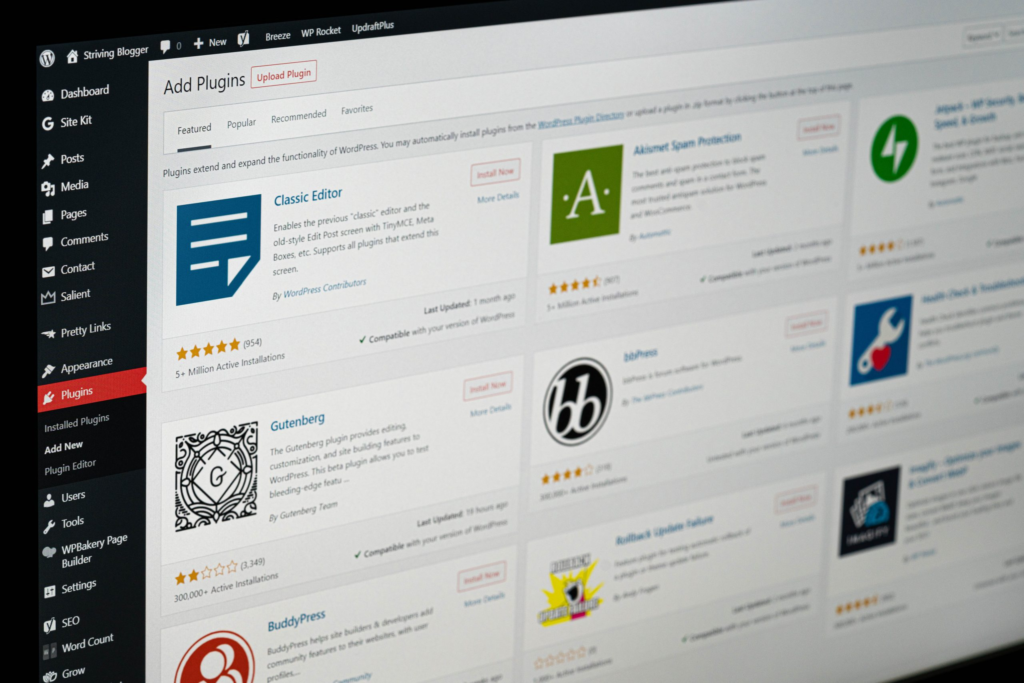How to Speed Up Your WordPress Site?

Is your WordPress site loading too slowly and causing frustration? Do you want to make it faster, improve the user experience, and boost your SEO ranking? Well, you’re in luck! There are plenty of ways to speed up your WordPress site without compromising your content or design.
Let’s explore some effective techniques for optimizing your site’s performance. We’ll cover things like reducing HTTP requests, optimizing images, using caching plugins, cutting down on plugins and scripts, implementing a Content Delivery Network (CDN), and making your site mobile-friendly.
1. Minimizing HTTP Requests
When a webpage loads, the browser sends requests for all the elements on the page, such as images, scripts, and stylesheets. These requests can pile up and slow down your site. To fix this, try to minimize the number of HTTP requests by reducing the resources on each page. Combine multiple files like CSS or JavaScript into one to reduce requests. You can also use image sprites to combine multiple images into one file.
2. Optimizing Images and Videos
Large image and video files can drastically slow down your site. To optimize them, compress their sizes without compromising quality. You can use tools like Photoshop or online compressors like TinyPNG. Another trick is to use lazy loading, which loads images and videos only when needed, reducing initial load time.
3. Using Caching Plugins
Caching plugins create static versions of your site’s pages and store them on the server. When a user visits your site, the cached version is served, cutting down loading time, especially for repeat visitors. Popular caching plugins include WP Rocket, WP Fastest Cache, W3 Total Cache, and WP Super Cache.
4. Reducing the Number of Plugins and Scripts
While plugins and scripts add functionality, they can slow down your site. Remove unnecessary ones and find alternatives that don’t bog down your website. This can significantly improve your site’s performance.
5. Implementing a CDN - Content Delivery Network
A CDN consists of servers worldwide that work together to deliver your website’s content from the server nearest to the user. This reduces the distance the content travels and speeds up loading time. Many web hosting providers offer CDN integration.
6. Take Advantage of Cloudflare
Cloudflare acts as a CDN and optimizes data routing, reducing latency. It offers image optimization, facilitates HTTP/3 and HTTP/2 prioritization, and uses the Brotli compression algorithm to reduce resource sizes.
Frequently Asked Questions:
1. How can I improve website speed for users in a specific location?
- Choose a reliable hosting provider with servers near your target audience.
- Use a CDN to distribute your content across multiple servers, reducing data travel.
- Optimize images and code to reduce file sizes and improve load times.
2. What server configurations can improve website speed?
- Use a CDN to reduce data travel.
- Implement caching mechanisms to reduce server requests.
- Optimize database queries and use a reliable hosting provider.
3. How can I optimize my website's database?
- Regularly clean up the database by removing unnecessary data.
- Use a caching plugin to reduce database queries and speed up loading time.
- Optimize database tables and indexes for better query performance.
4. How can I reduce the website's bounce rate and improve user engagement?
- Ensure relevant, engaging, and easy-to-read content.
- Improve loading speed by optimizing images, using a CDN, and minimizing plugins.
- Make the website mobile-friendly and encourage user engagement with clear call-to-action.
5. How can I ensure my website is mobile-friendly?
- Ensure your website is responsive to different screen sizes.
- Optimize images and videos for faster loading on mobile devices.
- Make fonts legible and buttons easy to tap with fingers
Final Words
In conclusion, speeding up your WordPress site is crucial for retaining visitors and improving search engine rankings. By following these optimization techniques and regularly fine-tuning your site, you can offer a faster and better user experience for your visitors.
